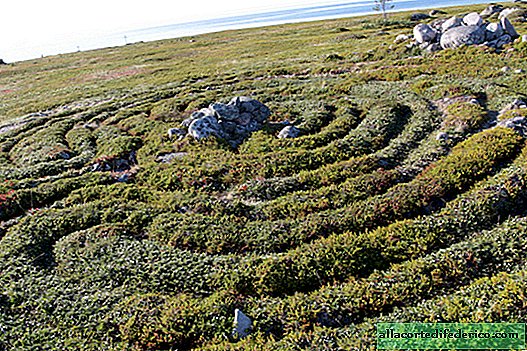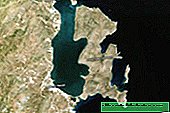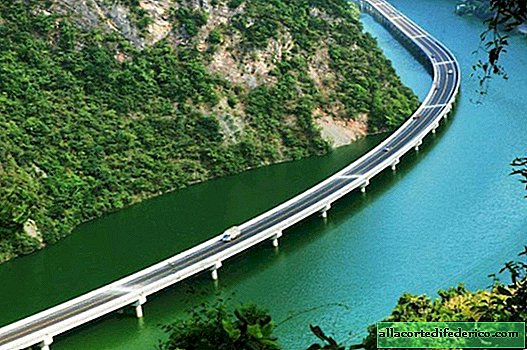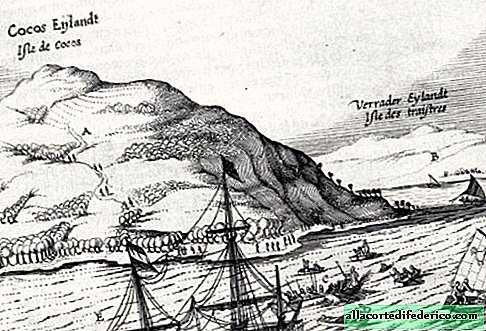Rainforests in exchange for palm oil
Global palm oil production is growing at an incredible pace. This product was known back in the days of the pharaohs, but until the 80s of the last century its global consumption did not exceed 5 million tons. Today, one EU consumes more than 5 million tons of palm oil per year. The largest consumers of this product are also India (more than 8 million tons) and China (more than 6 million tons), while in Russia this figure is approaching 1 million tons per year. Among the CIS countries, the largest importers of oil are Ukraine and Kazakhstan.
In the early 20th century, palm oil was used to make soap and margarine. Today, the application of this product in world industry is very diverse. Palm oil extends the shelf life of products in which it is present. It is widely used in the manufacture of confectionery, household chemicals, cosmetics and pharmaceuticals. This oil is also actively used as a substitute for fats in dairy products and in the production of dairy counterfeits, due to which a negative public opinion has been formed in relation to it. Despite this, palm oil, along with other 16 types of vegetable oils, is recognized by the World Health Organization and the Food and Agriculture Organization as a product that meets modern food standards.
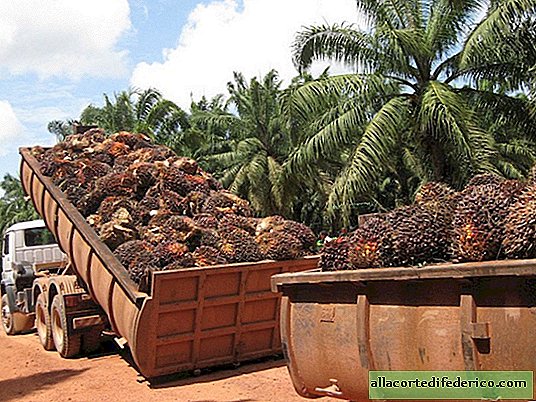
The growing popularity of palm oil can be explained not so much by some useful or unique properties of the product itself, but by the simplicity and cheapness of its production. This is a highly productive culture, and oil production is a very profitable business: from 1 ha of sunflower fields, you can get about 0.5 tons of oil, while from the same area of palm plantations you can squeeze up to 5 tons of oil. Palm oil is produced from the pulp of oil palm fruits. These palm trees begin to produce crops and generate income already 3-4 years after planting, and the maximum yield is reached at the age of 15. Suitable places for growing this palm are the equatorial regions of the planet (from the equator to 10 º latitude) in both hemispheres. They need intense sunlight and high rainfall. This is precisely the main tragedy of palm oil production. The habitat of palm trees is rather limited and coincides with the places of distribution of equatorial and tropical forests. To meet the demand for palm oil, the producing countries of this product annually cut down more and more areas of evergreen forests and plant the vacant place with thousands of oil palm trees. According to data published by the World Wide Fund for Nature (WWF), every hour on the planet Earth, the amount of forest that is equivalent in area to three football fields is cut down. And the vacant areas are occupied by oil palm.
 In the photo: deforestation under palm plantations in Indonesia
In the photo: deforestation under palm plantations in IndonesiaTo date, the largest oil palm plantations in area are located in Indonesia and Malaysia. These countries produce about 90% of all palm oil. It was Indonesia that came under the scrutiny of environmentalists and public figures around the world. Here, the extent of deforestation is simply terrifying. For palm plantations in this country 10,000,000 hectares of forest have already been destroyed, and this process will continue. Indonesian forests are the world's unique biodiversity ecosystems. As a result of clearing the territory and setting fire to the remnants of the forest, Indonesia even turned into the largest supplier of greenhouse gases to the Earth’s atmosphere, after the USA and China. Due to the growing global production of palm oil, thousands of animals are left without natural habitats, many species are already on the verge of extinction. Sumatran orangutan, Asian rhinoceros, Sumatran tiger, Bornean elephant, Malay bear, smoky leopard - this is just an incomplete list of species that are endangered.
Unfortunately, it is already difficult to imagine our world without palm oil, its production volumes are growing every year. This is a very cheap raw material for the production of many products. But isn’t mankind paying too high a price for this saving?






